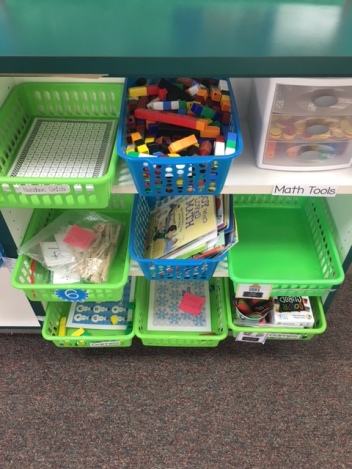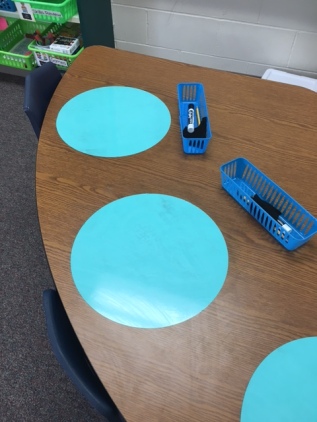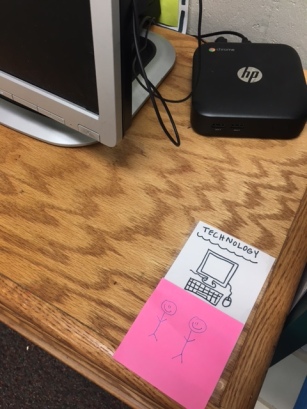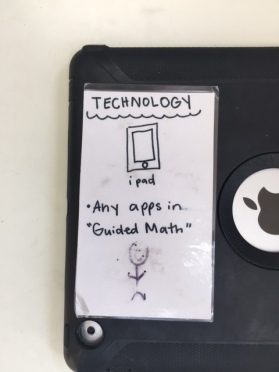Implementing Flexible Seating
As I said in my last post, I started implementing flexible seating since the beginning of the school year. I had a few options that kids could choose from to spread out in the room but every student still had a desk to go back to if necessary. A few weeks ago I got rid of about half my desks in the room because I didn’t feel it was necessary for everyone to have their own. However, I still have table/desk space for every student and I believe this is important. There are certain activities where the kids just need to be at a table spot. Here are photos of my classroom before and after the desks were removed.
Seating Options
Another important thing is that you have more seating options than you do students so that there is less to argue over and always lots to choose from! I am going to share with you some of the options that we have in our room.
Standing Desks
Removing the desks created SO much space and I love it! All my first grade team members were instantly jealous! When I had them removed, I also had four of them raised to become a standing area. I was unsure how popular this space would be but my kids love it! It is definitely one of the most popular spots in the room. They loved it so much I added another standing area with the triangle tables. We also have some extra stools around in case they want to pull up a chair to those areas. Here is a photo of our standing areas.
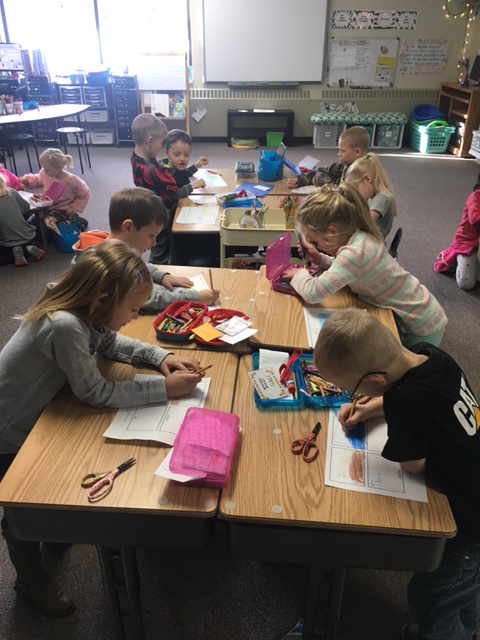
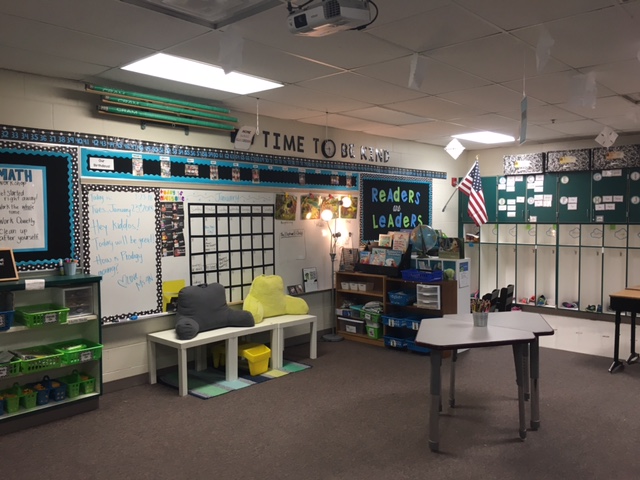
Floor Table
I got these triangle tables from another teacher at school and removed the legs to make a floor table. I bought seat cushions for the kids to sit on when they are at the table. This is another popular spot. I put cups of markers, pens, and colored pencils on two of the desks which makes these spaces a little more fun.
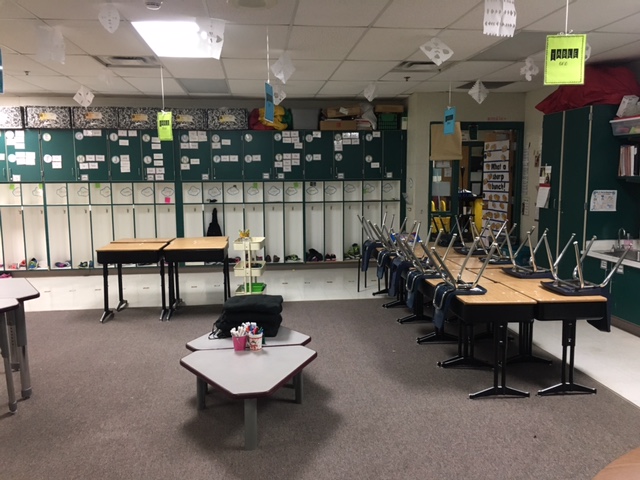
Scoop Rockers
I got my scoop rockers from Amazon for about $50 for 6 of them. They are definitely worth it. My kids are always using them and they seem very durable. They use them to read, write, and pull up to our floor table too! I was excited when they came because I thought I was getting an assortment of colors (like 6 different ones) but they were all blue and green which are my classroom colors. YAY!

Wobble Stools
The wobble stools are the most expensive thing I’ve bought for my classroom. They are $70 a piece. I bought 6 of them to use at my kidney table. I wouldn’t recommend these if you are planning on buying them yourself, but if you have the funding for them, go for it! They are a fun way for the kids to get their wiggles out. If we are doing an activity that doesn’t include teacher time, my kids will pull them around the room to use. I struggled with them a little bit at first at the teacher table because sometimes I felt like the kids were distracted by them while I was teaching. But now I’ve taught them that it is okay to wiggle on them as long as you are looking at me while I am teaching. When the box was delivered to our class my kids FREAKED OUT and we had to stop what we were doing to open the box. They didn’t know what was inside but someone did guess stools! We even kept the box as another seating option!
Choosing Their Spots
I have seen a lot of great management systems to use with flexible seating but I did NOT want to create something that was going to be more to manage for me and for the students. So for each activity my kids pick a new spot. They can always choose the same spot that they did before, if that’s what they want. I have a few kids that always go to the same spot because they know that works for them. Others, like to switch it up a lot. Both are fine with me as long as it is a Smart Spot for them!
Managing Materials
My kids keep a lot of their materials in their book bin. They have their pencil box, books, and a few other things that we use for reading and math. I keep their notebooks in bins in the front of the room. If they have work that doesn’t get done it goes in their Fix and Finish. When we are transitioning to something new, they know that EVERYTHING must be picked up and put away.
Effectiveness
With this project I have been collecting data on how often I have to move my students and how many kids have fix and finish at the end of the day because they did not choose a smart spot. This has helped me focus in on the kids that need guidance choosing a spot that is smart for them. My next step is creating a survey for my students to find out which seating options do they like the most. So far, I would say that my students are VERY motivated by choosing their own spots. It makes them feel independent and driven to complete their work.
Just after this short amount of time that we’ve had with flexible seating, I definitely plan on doing it for years to come!
As always, if you have any comments or questions please leave them below!
Follow me on Twitter and Instagram at @4nfirsties to see more of our Flexible Seating journey!

















